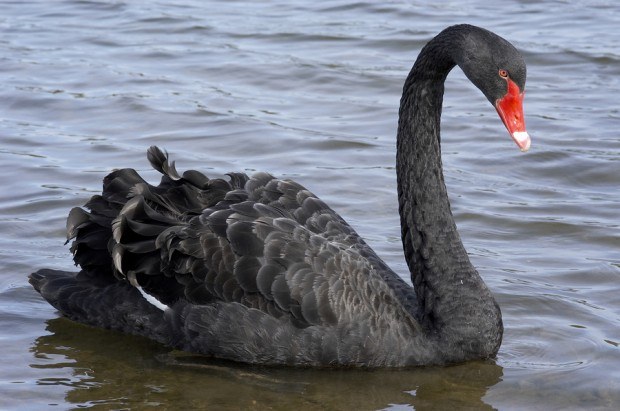Hedge funds set up to profit from huge market slides are falling out of favor, signalling that investors are increasingly confident leading central banks can avert the kind of meltdown that followed the Lehman Brothers’ collapse.
Investors are pulling out of such “tail risk” funds although economic and geopolitical bolts continue to strike from the blue, be they the messy bailout of Cyprus which has shown how the euro zone crisis can flare up when markets least expect it, or the U.S. stand-off with North Korea.
Despite such crises, shares have ploughed on to multi-year highs while volatility, as measured by the VIX or “Fear” Index, fell in mid-March to its lowest level since before the financial crisis when the U.S. investment bank went under in 2008.
Last year’s promise by European Central Bank chief Mario Draghi to do whatever it takes to safeguard the euro, along with bold measures by policymakers to stimulate economies from the United States to Japan, have undermined tail risk funds.
“If the world’s central banks have decided they are going to do whatever to support the economy then you are not going to have crazy volatility. You need a catalyst,” Nicolas Rousselet, Head of Hedge Funds at Swiss investor Unigestion, told Reuters.
Tail risk funds aim to hedge against rare but dangerous doomsday events, as described in the “black swan” theory of Lebanese-American academic Nassim Nicholas Taleb. They initially gained popularity with investors who had lost heavily in the 2008 crisis but the appeal of what are also called “black swan funds” is now waning.
Capula, one of the top 10 largest European hedge funds, has lost close to half the assets – about $1.1 billion – in its Tail Risk Fund since mid-2012, two investors in the fund said.
The fund, which now runs $1.4 billion, fell more than 14 percent last year as investors’ belief grew that the ECB would do all it could to calm the euro zone crisis when borrowing costs were soaring for Spain and Italy.
Other tail risk funds also slumped in 2012, with U.S.-based Pine River Capital’s down 36 percent and its assets falling to $200 million from $300 million, a separate investor in its fund said. Both firms declined to comment.
Unigestion set up a tail risk product after the financial crisis began but shut it in 2010 as markets rallied. Last year the firm considered re-launching but decided not to proceed.
“If you are a long-term investor, it just never makes you money,” Rousselet said.
As a form of insurance tail risk funds lose investors money if markets are flat – and even more if prices rise – but they can pay out vast sums if markets fall precipitously.
Pine River’s fund, which charges no performance fee so that its managers have no incentive to stray from the mandate that it acts as insurance, is designed to lose 2.5 percent per month in flat markets.
LOW VOLATILITY
Tail risk funds vary in how they try to protect investors against extreme events, but in their most simple form they buy put options on stocks or bonds, or bet that volatility will rise when markets sell off.
Put options give the owner the right to sell an underlying stock or security on expectations of a drop in price.
Estimating the size of the market is difficult because of the range of strategies employed, said Jeroen van Bezooijen, a tail risk product specialist at money manager PIMCO.
“I can see why some shorter-term focused investors would want to pull out of tail risk, but at the same time if you look at the world we see that the risks haven’t disappeared,” he said, mentioning the euro zone and Iran’s nuclear ambitions.
PIMCO’s tail risk products now manage $50 billion, up from about $10 billion in 2009, after investors smarting over losses in the financial crisis looked for protection.
However, Capula has cut the amount of its flagship Global Relative Value Fund invested in its Tail Risk strategy to 15 percent from 20 percent, one of its investors said.
This year the firm “re-positioned” its Tail Risk Fund so it is less correlated to short-term market moves. It is up 0.56 percent so far in 2013, a person familiar with the fund said.
Pine River’s tail risk fund fell 3.8 percent in the first two months of this year, one source familiar with the firm said.
“Most of these funds have been modelled around the Lehman type of event…But there can be better ways of protecting, like global macro funds or something more systematic which can make money in rising markets,” said one London-based investor who has looked closely at tail risk hedges but decided not to invest.
Despite the losses, some managers say now is the time to buy their tail hedges, given how cheap volatility has become.
“Across asset classes volatility is exceptionally low. Volatility is the most mispriced thing in financial markets (at the moment),” Boaz Weinstein, who heads hedge fund Saba Capital, told a conference in New York last month.
Saba also runs a tail risk hedge fund which sources familiar with its performance said fell last year. Saba could not immediately be reached for comment.
Weinstein pointed to Cyprus as an “unknown unknown” and a reminder that these tail risks are still there.





















 What to Expect in 2026: U.S. P/C Results More Like 2024
What to Expect in 2026: U.S. P/C Results More Like 2024  Viewpoint: Agentic AI Is Coming to Insurance Industry – Much Faster Than You Think
Viewpoint: Agentic AI Is Coming to Insurance Industry – Much Faster Than You Think  The Latest Launches from Allstate, WTW, Whisker Labs
The Latest Launches from Allstate, WTW, Whisker Labs  Chubb, The Hartford, Liberty and Travelers Team Up on Surety Tech Co. Launch
Chubb, The Hartford, Liberty and Travelers Team Up on Surety Tech Co. Launch 






